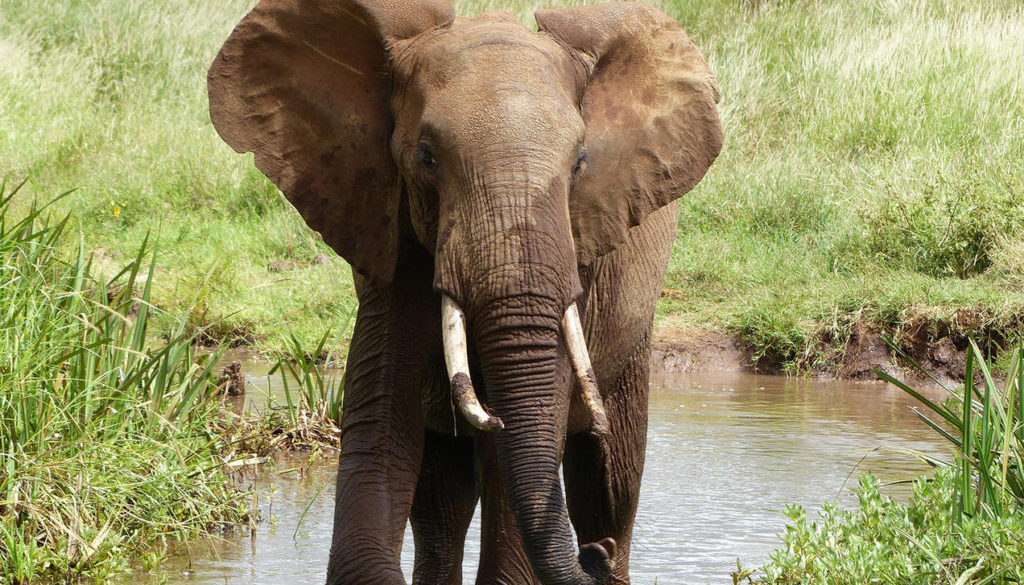New Analysis Shows Government Lacks Plans to Save Endangered Species From Climate Change
By Jacob Carter, Union of Concerned Scientists
Today, a new analysis published in Nature Climate Change shows that the US government doesn’t have many plans to conserve hundreds of endangered species that are at-risk of being affected by climate change. The analysis finds that 99.8% of the 459 US animals listed as endangered under the Endangered Species Act (ESA) are at risk of having their populations further decrease under a changing climate. However, the two agencies in charge of managing conservation of these species, the Fish and Wildlife Service (FWS) and the National Marine Fisheries Service (NMFS), have plans to manage the effects of climate change for only 18% of them.
Why should you care?
If you are not convinced to care just by the intrinsic value that wildlife holds in our world, maybe the fact that over half of the medicines we use are derived from wildlife might convince you to care? Take, for example, the Houston Toad, which secretes serotonin and alkaloids that are used to treat heart and neurological disease.
Similarly derived medicinal products from wildlife, sometimes endangered wildlife, are used to treat cancer, Hodgkin’s disease, Parkinson’s disease, diabetes, and other illnesses. Aside from the health benefits, these species are driving funding to pharmaceutical and medicinal research industries. In fact, conserving our biodiversity can boost our global economy.
Once these species are gone, though—they are gone forever. There is no science that can bring a species back from extinction. And that means that when a species is gone forever, so are all the benefits that species provided—both to nature and to humans, directly or indirectly.
You can look at the loss of these species from all kinds of different angles and you can only logically come to one conclusion—losing them is bad for everyone. That is why it is so important for our government to have plans in place that are exhaustive in their strategies to conserve endangered species. And they haven’t been when it comes to climate change—that’s a problem that needs to be fixed.
But can it?
Conserving endangered species under President Trump
President Trump and his administration have not made it easy to conserve endangered species, especially when it comes to protecting them from the effects of climate change. As the Nature Climate Change analysis states, “In 2017, the Trump administration revoked many policies and commitments on climate change established by the Obama administration, such as Executive Order 13653 on adaptation and the Paris Global Climate Agreement. This has disrupted progress on both mitigation and adaptation nationally and internationally.”
In addition to the rollback of climate-specific policy work, the administration also has attacked the implementation of the ESA and the protections it affords to endangered wildlife. In August of this year, the Trump administration dismantled the role of science in informing protections for endangered and threatened wildlife. The administration issued a finalized rule altering key pieces of how the FWS and NMFS will implement the bipartisan piece of legislation, including inserting economic considerations in listing decisions. Agency decisions determining whether to list a species on the endangered species list have been based solely on the best available scientific data ever since the legislation was passed.
The Trump administration also nixed considerations of the effects of climate change in listing decisions. For example, under the prior process for determining whether a species should be listed as endangered, scientists could consider a “foreseeable future” for the species. This means that scientists could use climate models to determine whether or not future conditions for a particular species would be threatening to the continued existence of that species. But the Trump administration’s new rule redefines “foreseeable future” such that FWS and NMFS will no longer be able to consider future climate change threats to a species population. The new rule also makes it impossible for the FWS and NMFS to designate places that endangered species may not be inhabiting now but will likely be inhabiting in the future due to climate change as “critical habitat,” which would offer those areas additional protections.
Management plans must be more effective
We are in the midst of Earth’s sixth major extinction crisis, in part due to the negative effects of climate change. The United Nations (UN) issued the most comprehensive analysis of global nature loss this year, finding that one million of Earth’s eight million known species are at risk of extinction. The report warns that “grave impacts on people around the world [are] now likely.”
The UN report also has good news—it’s not too late to save these species. Part of the plan for conserving these species is acknowledging the effects that climate change presents and developing management plans that take action to protect these species from those effects. But we don’t have time to wait—seriously, we don’t. Our government ought to be doing more to protect species—not less.

